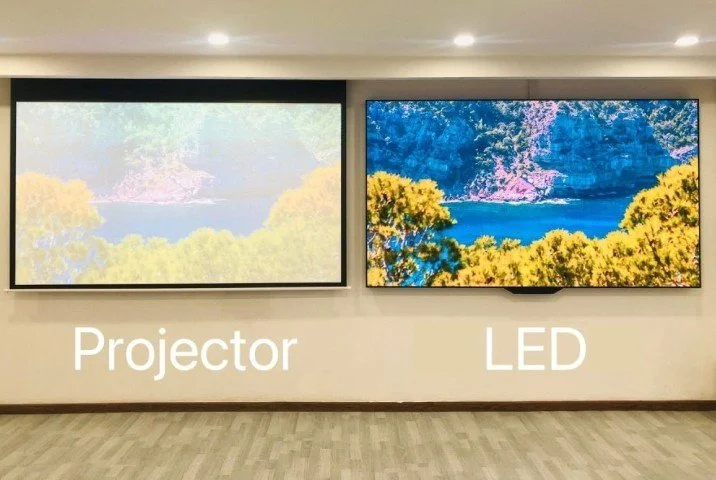LED vs Projector
Did you know LED walls are ultra-bright and crystal clear—even in full daylight? That makes them the perfect choice for outdoor events, watch parties, and corporate gatherings in any weather.
LED Screens vs. Projectors: Key Differences
1. Visibility & Brightness
LED Screens: Emit light directly toward viewers, creating a bright, sharp, and vivid image visible 24/7—even in direct sunlight or brightly lit rooms. Perfect for outdoor events, large meeting rooms, or any high-light environment.
Projectors: Shine light through a lens onto a surface, relying on reflection. Images are dimmer and require low-light or dark conditions for optimal viewing.
2. Weather & Durability
LED Screens: Built to withstand outdoor conditions—rain, heat, and sunlight—without impacting performance.
Projectors: Not weatherproof; exposure to moisture or extreme temperatures can damage components.
3. Image Quality
LED Screens: Maintain consistent brightness, sharpness, and color accuracy from nearly any angle. Ideal for high-impact visuals and large audiences.
Projectors: Most are standard definition; brightness and clarity degrade in bright settings. Viewing angles and ambient light can significantly reduce image quality.
4. Setup & Maintenance
LED Screens: Plug-and-play setup with minimal adjustments. Low maintenance, no bulbs to replace.
Projectors: Require careful placement, calibration, and suitable projection surfaces. Bulbs and other components may need regular replacement.
5. Noise & Heat
LED Screens: Operate quietly with efficient cooling.
Projectors: Generate heat and often require noisy fans for cooling.
✅ Summary:
LED screens outperform projectors in virtually every scenario where brightness, clarity, and ease of use matter. Projectors still work in controlled, low-light environments, but LED technology ensures your visuals shine no matter the time of day or the weather.


